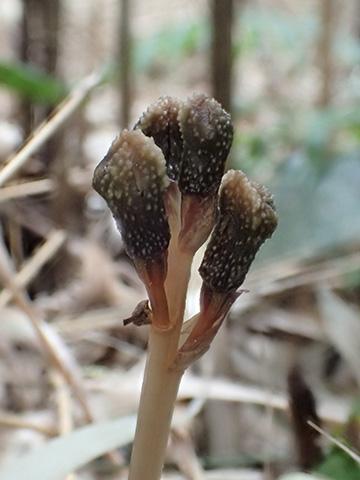On the Japanese island of Kuroshima, a scientist has discovered a new species of plant that does not use photosynthesis to derive its nutrition. It steals nutrients from fungi instead.
The plant has another peculiar character: its flowers never bloom.
Researcher Kenji Suetsugu of Kobe University chanced upon some 100 individuals of the new plant in April 2016, during a research trip in the lowland forests in Kuroshima. Detailed examination of the plant revealed that it is a new member of the genus Gastrodia, a rare group of mycoheterotrophic orchids that are distributed in the temperate and tropical forests of Asia, Oceania, Madagascar and Africa. Suetsugu has named the new species Gastrodia kuroshimensis after the island on which it was discovered.
The newly discovered orchid — like most other mycoheterotrophic plants — occurs in the dark understory of forests where little light penetrates, according to the new study published in Phytotaxa. So instead of using sunlight or photosynthesis to generate nutrients, the plant parasitizes fungi in the forest soil for its daily dose of nutrition.
New orchid – Gastrodia kuroshimensis – discovered on Kuroshima island in Japan. Photo by Kenji Suetsugu.New orchid – Gastrodia kuroshimensis – discovered on Kuroshima island in Japan. Photo by Kenji Suetsugu.
Moreover, the plant produces dark greenish-brown flowers that remain closed throughout the entire flowering period between April and May. The plants rely completely on self-pollination within closed buds instead.
Such obligate self-pollination, or “complete cleistogamy”, is extremely rare, Suetsugu writes in the paper, but is relatively common in the genus Gastrodia and has been observed in at least three other species: G. clausa, G. takeshimensis Suetsugu and G. flexistyloides.
This unique reproductive strategy may be a product of the environment the plant inhabits, he adds. Since the low-light environment of Mycoheterotrophic plants is usually unsuitable for common insect pollinators, obligate self-pollination may be an evolutionary response that ensures reproductive success when pollinators are absent or limited, the study posits.
So far, the new plant G. kuroshimensis has been found on three Japanese islands — Kuroshima, Akusekijima and Yakushima.




